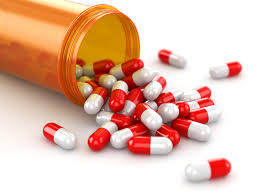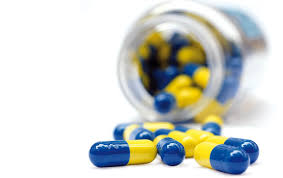
It’s no mystery that we have a massive over-use of antibiotics problem in our culture. Once the miracle cure for anything that ails you, has now been linked to auto-immune conditions, obesity, and the rise in drug resistant bacteria. The use of antibiotics on the human ecosystem is like an atomic bomb, wiping out any and all types of bacteria present. It’s able to end internal wars when used appropriately but over use can lead to the end of civilization as we know it.
For these reasons, many of the parents in my practice are weary about putting their kids or themselves on antibiotics. For clarification, I cannot prescribe antibiotics nor can I tell you to not go on them. We just strive to have good relationships with our practice members so many want to know what I would do and are comfortable asking. What I do is give circumstances about how I would approach the situation if my kids needed them. Thankfully, at the time of writing this, my 3 boys of 4 yo, 2 yo, and 3 months, have never been on antibiotics nor needed them.

If my boys or wife, or even myself had need for them, I would be just as cautious as my practice peeps are. As a kid, I was on antibiotics more than I can remember. Eventually, someone realized I was allergic to them and they were causing more harm than help. I would say my repeated doses were a major contributor to the horrific eczema that I had in college.
Fortunately, the nurse practitioner at my college was severely wrong about my diagnosis, and pretty much every other kid that walked into her office in the late 90’s, early 2000’s. If you were a female not feeling well, her top differential diagnosis was that you were pregnant and she automatically gave you a pregnancy test. For college males, you automatically had an STD. In my case, she tried to label my eczema as scabies. Ridiculous and not possible to say the least.
I digress….
What is a parent supposed to do with facing the potential for antibiotics? If the illness is viral, the antibiotic is useless and wipes out anything beneficial that would have helped the body fight. But if it’s bacterial, the antibiotic will still wipe out everything but can have benefit. Most doctors and most parents don’t want to wait for a culture to see the the type of bug that is causing the problem. This doesn’t fit the profile of the parents I see.
I’m sure some of you reading will have the urge to comment about how certain essential oils, herbs, or other natural remedies are great for bacterial infections. That’s not the point of this post. Please refrain, it won’t get approved.
If I were in that situation, I would actually look to a classic cardiac test to add insight into the context of the illness. The test is Rapid CRP (C-Reactive Protein). CRP is often used as a way to quantify inflammation in the body. As inflammation runs rampant, so do your changes of developing conditions from heart disease, cancer, Alzheimer’s, anxiety/depression, diabetes, yada, yada, yada.
But remember, inflammation isn’t necessarily a bad thing. Out of control inflammation is. Acute inflammation is tissue destruction. Chronic inflammation is tissue dysfunction.
Your body never does stupid stuff. Your body is always in a state of intelligent adaptation. Sometimes that adaptation is to produce inflammation. Inflammation happens for 2 very life saving, health-sustaining reasons.
- Fight Infection and be used as a first line defense. The coughing, sneezing, runny nose, diarrhea, fever, and sweating isn’t the fault of the bug. This is your body’s response to the bug. You sneeze to expel the bug at 35 mph to a distance of 12-20 feet away (according to the Myth Busters duo, who dispelled the 100 mph to 30 feet away sneeze mantra). Suppressing these symptoms with steroids, anti-histamines, and other amphetamine based cold and cough meds just allows the little buggers to stick around longer, keeping you sick longer.
- Injury/Tissue Repair. You work out to get bigger and stronger. You are voluntarily injuring yourself for the purpose of allowing your body to build it back up again. All that soreness you experience the day or 2 after a workout isn’t a build of lactic acid. It’s the damage you created in your workout. You sliced and diced your cells. Inflammation comes in to clean up the debris and recruit factors to rebuild. Again, taking prescription anti-inflammatory compounds like NSAIDS delays your healing and recovery, not to mention destroys your stomach in the process, which in turn creates another reason for inflammation to be activated to heal up another part of the body. This is why I also caution the consumption of caffeine, especially after an injury. Caffeine triggers the adrenals, which releases Cortisol, which has anti-inflammatory effects on the body by suppressing the immune system. The more caffeine, the longer you deal with the injury.
No matter if inflammation is produced to fight infection or repair a torn bicep, it’s all an immune reaction. I’m sure we have all experienced the acute inflammatory process of red skin and swelling. Inflammation can be triggered from external events or internal events. External events are things like bacteria, virus, as well as allergens, irritants, toxins, and foreign bodies.
What the hey does CRP have to do with the administration of antibiotics? It has been observed that CRP tends to be elevated in bacterial infections but not so much for viral ones. This makes acute elevations of CRP a sensitive and somewhat specific marker for bacterial infections when an illness is suspected, especially in respiratory infections.
According to the European Respiratory Journal:
Unnecessary use of antibiotics plays an important role in increasing bacterial resistance and medical costs, as well as the risk of drug-related adverse events. The most frequent indication for antibiotic prescription in the north-western hemisphere is lower respiratory tract infections (LRTI). Acute bronchitis accounts for 80% of LRTIs, and despite evidence of little or no benefit of antibiotics, approximately three-quarters of LRTIs are treated with antimicrobial agents in most countries in the north-western hemisphere. Clinical signs and symptoms are unreliable for distinguishing viral from bacterial LRTIs. Diagnostic uncertainty increases the likelihood of inappropriate antibiotic prescription and, when in doubt, general practitioners (GPs) opt for antibiotic prescription in case of possible pneumonia, since routine chest radiography for all patients with LRTI is neither feasible nor appropriate in primary care. C-reactive protein (CRP) is a promising biomarker for improving the assessment of LRTI in primary care and has been shown to perform better in predicting the diagnosis of pneumonia than any individual or combined clinical symptoms and signs in LRTI. The CRP rapid test is feasible and easy to perform in the community setting, since it takes ∼3 min to obtain the result, it can utilize serum, plasma or whole blood, organized laboratories are not needed, and it can be used by clinicians or nursing staff. Moreover, studies comparing this rapid test with the routine CRP laboratory test have shown a very good correlation, thereby demonstrating its reliability.
You shouldn’t use the rapid CRP test as a stand alone criteria for the use or the withholding of an antibiotic. In fact, in the groups that used the CRP as an added diagnostic tool, they were instructed to withhold antibiotics if the CRP was less than 20 mg/L and to give antibiotics of the value was over 100 mg/L. The range from 20 to 100 is a big gap that you need to have open dialogue with your doc about the best course of treatment.
As a parent you never want to see your kid suffer. The fine line is deciphering if your kid is suffering or just uncomfortable. Again, you have to make that call. But the more we mistake being uncomfortable as suffering, the more we intervene and limit the body’s ability to adapt and overcome long term. We have to step back when there’s a fever, a cough, sneeze, or any other symptom and realize the body is intelligent and those symptoms are designed to allow the body to buy enough time to escape the underlying ailment.
There are times for interventions and there are times to step back and wait it out. The rapid CRP test can be one of those things to help put the unknown into more context. If you want strategies and action plans for building your kid’s immune system, you know how to find me.


0 Comments